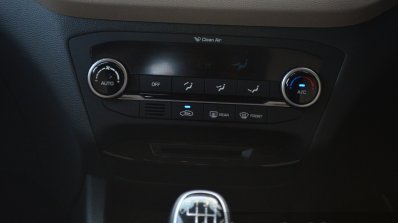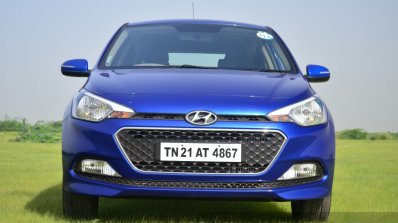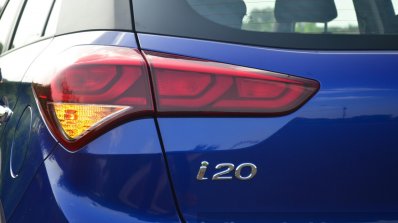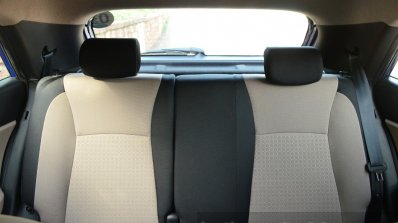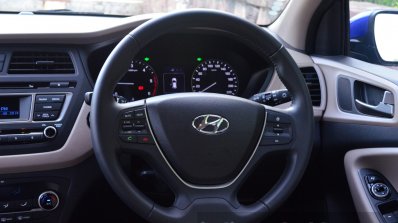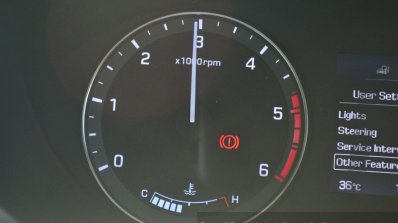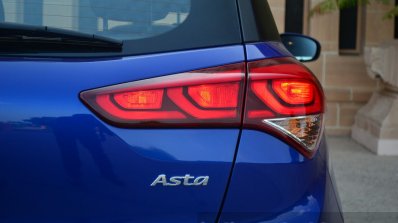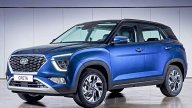Review - Hyundai Elite i20 Diesel
“If at first you don’t succeed, try again”, would be an apt way of summarizing Hyundai India’s tryst with the B-hatchback segment. The Korean car maker first launched the Getz in 2004, but found little success in a country which was just warming up to the idea of a premium hatchback. The Getz’s successor though, the i20, fared much better, both in terms of sales and a fan following. In fact, after the Maruti Swift, the i20 is the next big seller in its segment.

After having the i20 in the market for six years, Hyundai has launched the next generation model and its global premiere was in fact held in India. The Elite i20 as it is called, promises to build on the success of its predecessor by offering more of everything for relatively the same price.
Exterior -
Things have changed from the time Hyundai launched its first B-segment hatchback. Now, the car maker has a design studio in Europe (Rüsselsheim, Germany, to be specific) and that is where the Elite was styled.

The front sees an iteration of Hyundai’s hexagonal grille flanked by flared headlight clusters. The sides of the car are especially characterized by black C-Pillars, which to some extent try to create a wraparound like windscreen. Also seen on this top-end model are diamond-cut 16-inch alloy wheels. The taillights of the Elite extend well into the bootlid and have an interesting pattern for their brake lights.
The light for reverse illumination has been moved down to the bumper, and sadly, there is only a single light present. While providing a single reverse light is not uncommon, it is strangely positioned on the driver’s side, whilst in other cars like the SX4, Polo and Vento (to name some with this arrangement) it is positioned on the passenger’s side to give the driver a better illuminated view in the wing mirror.

In terms of dimensions, the Elite is shorter than the model it replaces by a good 10 mm at 3,985 mm. The wheelbase though has increased to 2,570 mm. In terms of width and height, the Elite measures 1,734 mm and 1,505 mm. The 170 mm ground clearance is more than adequate for our road conditions.
Interior -

The interior is an adaptation of Hyundai’s dual-tone black-and-beige theme. The steering wheel, which is a 3-spoke unit, seems inspired by cars like the Xcent and Grand i10, as do a few switches here and there, the power window buttons especially.
At the center is a music system which is capable of playing CD/MP3/Radio/FM/AM/AUX-in/Bluetooth and USB. An 8-speaker audio system (4 speakers and 4 tweeters) comes on the top-end Asta trim, and the sound quality is indeed commendable.
Getting comfortable in the driver’s seat takes hardly any time, for the controls for seat height, seat back recline and length adjustment are ergonomically located. The steering wheel comes with tilt and telescopic capability, and adding to the comfort factor is the center armrest which will be a boon on long drives.
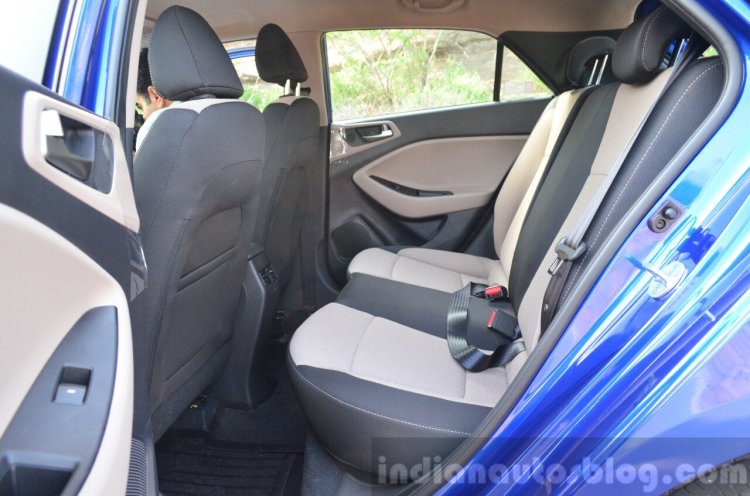
Overall build quality and fit-and-finish are top notch, as it has become a key part of the car maker’s DNA these days. However, the plastic quality on the Polo has a premium edge to it which is not seen on the Elite.
Comfort levels at the rear are equally good. The seat itself is designed to hold three occupants (in reality three will be a bit of a squeeze) and comes without a center armrest. The seat back recline angle is well chosen, as is the almost flat center tunnel. Compared to the older model, leg and kneeroom have improved a notch and seating two 6-footers back-to-back shouldn’t be a problem on the car. On all variants save for the base trim, the Elite also offers rear AC vents.

And finally, the Elite i20 comes with a 285 liter boot which is well shaped and illuminated. Additional space can be had by pushing down the rear seat (60:40 split).
To summarize, compared to its rivals, the Elite easily offers one of the most spacious cabins coupled with several comfort features that should appeal to the family car buyer.
Features -

The top of the line Asta trim seen in these images comes equipped with dual front airbags, ABS, EBD, steering position indicator and a smart pedal system. Other features include diamond-cut 16-inch alloy wheels, keyless entry with engine starter button, electrically adjustable and folding wing mirrors, multifunction steering wheel, a music system, automatic climate control, reverse camera with an electro-chromatic rear view mirror and a cooled glovebox.
The Elite i20 continues to be a feature packed car with all the bells and whistles expected from it.
Engine and Gearbox -

Hyundai decided to carry over the engines from the older generation model. The engine powering this i20 is the 1.4-liter four-cylinder CRDI motor belting out 90 PS (88.74 bhp) and 220 Nm of torque. The gearbox is a 6-speed manual unit, and the Elite i20 is in fact the only car in its class to get a 6-speed unit, like its predecessor.
As always, this engine scores well on the refinement front and NVH levels are one of the best in segment as well. Even at higher rpms, while the sound may indicate the fuel type of the car, it doesn’t get very obtrusive.
Coming to performance, the 1.4-liter engine clearly works well post 1,750 rpm. There is a noticeable surge in power beyond this point which extends till about 3,500 rpm. Keep the Elite within this powerband, and progress is bound to be quick.

Below the 1,750 rpm point, turbo lag is definitely present. So how is it different compared to the older model? Well, where the older model would sometimes struggle a bit to get a move on, the Elite seems a bit more eager even when off boost. This certainly aids in city driving conditions as it minimizes gear changes.
In terms of outright power, the 1.4-liter motor feels a tad slow in comparison to the new 1.5-liter VW TDI (seen on the Polo), and lacks the sprightly nature of the 1.3-liter DDiS in the Swift. The Elite is by no means a slow car though, just that the Polo and Swift will feel noticeably quicker and more performance oriented when all their horses are called for.

Coming to the gearbox, the clutch pedal feels a lot more lighter than the outgoing model, which is bound to appeal to the driver’s left foot in urban traffic conditions. This is further complemented by the short, yet precise gear lever which slots into gates smoothly and accurately. Thanks to the 6th gear, you can comfortably cruise from speeds as low as 80 km/h without bothering the clutch or the gear lever any further.
Overall, the performance package of the Elite is more than adequate for city and highway driving conditions. While a family car buyer will certainly appreciate the Elite’s powertrain, enthusiasts may still favor the Polo or Swift.
Ride and Handling -

The ride quality of the Elite is one area where Hyundai have made good improvements. Even on roads which had rough craters and potholes, the hatchback did a remarkable job of ironing them out, and seldom letting its occupants know of the terrain. Mind you, our test car came with the larger 16-inch wheels, and other variants which get 14-inch units, could feel more comfier.
Hyundai have also gotten rid of the slow suspension system seen on the earlier car, which was known to have a bouncy ride. The new Elite has almost no bouncyness to its ride, and is nearly flat.
So, how does the Elite fair dynamically? The sore points first. The steering feel is still not up there with a Maruti Swift for example. It is evident that Hyundai have tried to improve the feedback, and have done a decent job, but its still not worthy of being a driver’s delight. The steering feels artificially heavy in places, and suddenly light in other places.

What comes as a marked improvement is the road holding capability of the car. Taking twisty bends, it is evident that the Elite is a lot more stiffer and a lot more tauter than its predecessor. It is quick to react to direction changes and feels far more agile than the model it replaces.
Overall, the Elite i20 has a far more plusher ride than its predecessor, and yet manages to be dynamically more stable. While steering feel could have been improved, the car is dynamically stronger than the older model, and that seems to have been the focus point for this generation of the hatchback.
Brakes and Safety -

The Asta (O) trim with 6 airbags is no longer in the offing. Buyers need to be content with dual airbags, one for the driver and one for the co-passenger. Other safety features come in the form of ABS, EBD, a smart pedal system (should the driver press the accelerator and brake pedal simultaneously, the brake overrides the accelerator), and a steering position indicator (warns the driver about the steering not being in the dead-ahead position upon starting).
Even with front discs only, the braking performance of the car was nothing short of impeccable. Where the old i20 could get a bit squirmy under hard braking, the Elite comes to a stop with poise. Grip levels from the 195/55 Bridgestone are equally good.
Fuel Efficiency -
The Elite i20 diesel is claimed by the ARAI to achieve 22.54 km/l for the Era and Magna variants, and 21.76 km/l for the Sportz and Asta variants.
Prices -
The Elite i20 diesel range starts from INR 6.09 lakhs and extends up to INR 7.66 lakhs, ex-Showroom, New Delhi.
Verdict -

No doubt, the new Elite i20 is indeed a step up from the previous generation model in many aspects. The exterior and interior design, overall build quality, performance and ride and handling have certainly improved.
Loose ends? The steering of the Elite still doesn’t feel as crisp as say that of the Swift’s, and the engine could do with a bit more punch. Also, with manufacturers like Volkswagen providing airbags as a part of the standard kit, Hyundai needs to be wary that it may need to offer more features to stay ahead of the game.
As an overall package, the Elite i20 is hard to fault with. However, enthusiasts in the segment may find the Swift or the new Polo 1.5 TDI a bit more appealing in the driving and handling department.
It also needs to be mentioned that Hyundai Motor India Ltd. (HMIL) now has a problem many manufacturers would wish for. And that is, offering a lot of choice to the compact premium car buyer. Between the more practical Xcent and the stylish Elite, buyers may have a hard time choosing inside the brand!
Notes:
Hyundai is keen to establish the i20, and generally its future products, as premium products. Here are a few things I noticed that suggest so.
1. The door lock/unlock button for the Elite is positioned right in the center of the dashboard, above the hazard light switch. All BMWs have their lock/unlock button (with a similar font) in the same area.
2. When you're locking/unlocking with the remote, the car makes a sound much like its honking. This is again seen in German cars of BMW and Mercedes.
3. The printed brochure of the Elite is much like a coffee table book, and the quality of the brochure itself (the pages, and the print) is likely to make a good and lasting impression on prospective buyers.


